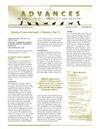Successful Management of Dermatophytosis in a Desi Short Hair Domestic Kitten
Q4 Veterinary
引用次数: 0
Abstract
Introduction: Dermatophytosis is an uncommon fungal infection of hair and skin in the claw. The infection is caused by the invasion of the hair shaft and stratum corneum by Keratophilic fungi. Fungal skin problems in pet animals commonly occur in hot and humid climatic regions. Cats suffer from superficial dermatophytosis despite their licking and self-cleansing behavior. Case report: A two-month-old female desi-short hair domestic kitten weighing 1.2 kg body weight was presented to Veterinary Clinical Complex, Kurumbapet, India, with a history of crusty patchy alopecic lesions on the rump and paw of the right forelimb for the past week in July 2022. The owner also reported generalized hair loss and scratching. Clinical examination revealed patchy circular dry lesions on the rump and the paw of the right forelimb. No abnormality was detected in the general appearance of the kitten. Behavioral habit was active, appetite and voiding habits were normal, popliteal lymph nodes were palpable, heart rate was 170 beats/minute, respiratory rate was 22 breaths/minute, rectal temperature was 101.8℉, and the conjunctival mucous membrane was pink. The pinna-pedal reflex was negative. Direct microscopy of the skin scraping sample revealed highly positive endothrix spores in the hair shaft. The smear prepared from the culture of the scrapings was stained with Lactophenol Cotton Blue, which confirmed the growth of ligamentous hyphae and mycelium of the dermatophyte, Microsporum spp. Hence, the case was diagnosed with superficial dermatophytosis caused by Microsporum spp. The kitten was successfully treated with itraconazole syrup (Felintra, Savavet, India) administered at the dosage of 5 mg/kg oral for 2 alternative weeks (every 24 hours for 7 days). Moreover, Cetirizine tablet as a non-sedating medicine and antihistamine which acts selectively on H1-receptor was given orally at the dosage of 2.5 mg/cat for the next 5 days, and liver supportive (Liv.52 syrup which contains herbal extracts) was administered orally at the dosage of 0.5 ml daily to overcome the hepatotoxic effect of anti-fungal drugs. Complete recovery was noticed by the third week of treatment which was the second week of the itraconazole syrup (Felintra, Savavet, India) treatment. Conclusion: Dermatophytosis in a kitten was diagnosed early and treated promptly with a proper treatment schedule with itraconazole without any untoward effects on the kitten.德西短毛家猫皮肤癣的成功治疗
简介:皮肤真菌病是一种罕见的真菌感染的毛发和皮肤的爪子。这种感染是由嗜角真菌侵入毛干和角质层引起的。宠物动物的真菌皮肤问题通常发生在炎热潮湿的气候地区。尽管猫有舔舐和自我清洁的行为,但它们仍然患有浅表皮肤癣。病例报告:2022年7月,印度Kurumbapet兽医临床中心收治了一只体重1.2 kg、两个月大的雌性短毛家猫,右前肢的臀部和爪子在过去一周出现了硬壳状斑状脱发。主人还报告了全身脱发和抓挠。临床检查发现右前肢的臀部和脚掌有斑片状圆形干性病变。小猫的总体外观没有发现异常。行为习惯活跃,食欲、排尿习惯正常,腘窝淋巴结可触及,心率170次/分,呼吸22次/分,直肠温度101.8℉,结膜黏膜呈粉红色。脚尖反射阴性。直接显微镜下的皮肤刮擦样品显示高度阳性的内生孢子在毛干。刮伤培养的涂片经乳酚棉蓝染色,证实皮肤真菌,Microsporum spp的纤维菌丝和菌丝的生长,因此,诊断为由Microsporum spp引起的浅表皮肤真菌病。小猫被成功地用伊曲康唑糖浆(Felintra, Savavet,印度)以5 mg/kg的剂量口服2周(每24小时一次,连续7天)。此外,西替利嗪片作为一种非镇静药物和选择性作用于h1受体的抗组胺药,以2.5 mg/cat的剂量口服5天,并以每天0.5 ml的剂量口服肝支持(含有草药提取物的Liv.52糖浆),以克服抗真菌药物的肝毒性作用。治疗的第三周即伊曲康唑糖浆(Felintra, Savavet,印度)治疗的第二周,患者完全康复。结论:小猫皮肤真菌病诊断早,治疗及时,伊曲康唑治疗方案合理,对小猫无不良影响。
本文章由计算机程序翻译,如有差异,请以英文原文为准。
求助全文
约1分钟内获得全文
求助全文
来源期刊

Advances in Small Animal Medicine and Surgery
Veterinary-Small Animals
自引率
0.00%
发文量
0
期刊介绍:
Each month, Advances in Small Animal Medicine and Surgery features abstracts of material from recent publications and presentations, followed by comments from specialists in the field. Small animal veterinarians and veterinary technicians gain new insight into specific topics and increase their skills in judging how to apply new tests and treatments in practice situations.
 求助内容:
求助内容: 应助结果提醒方式:
应助结果提醒方式:


